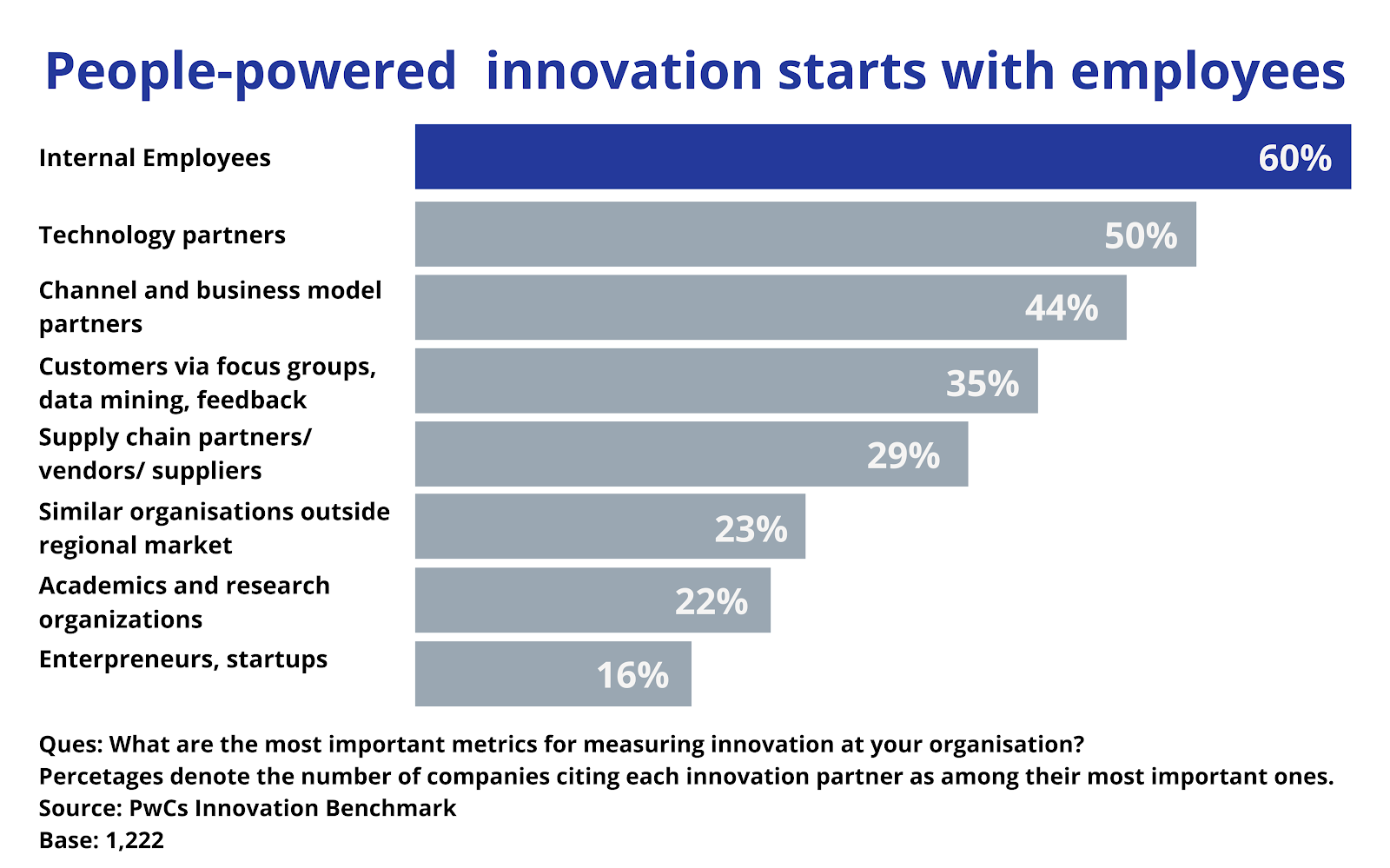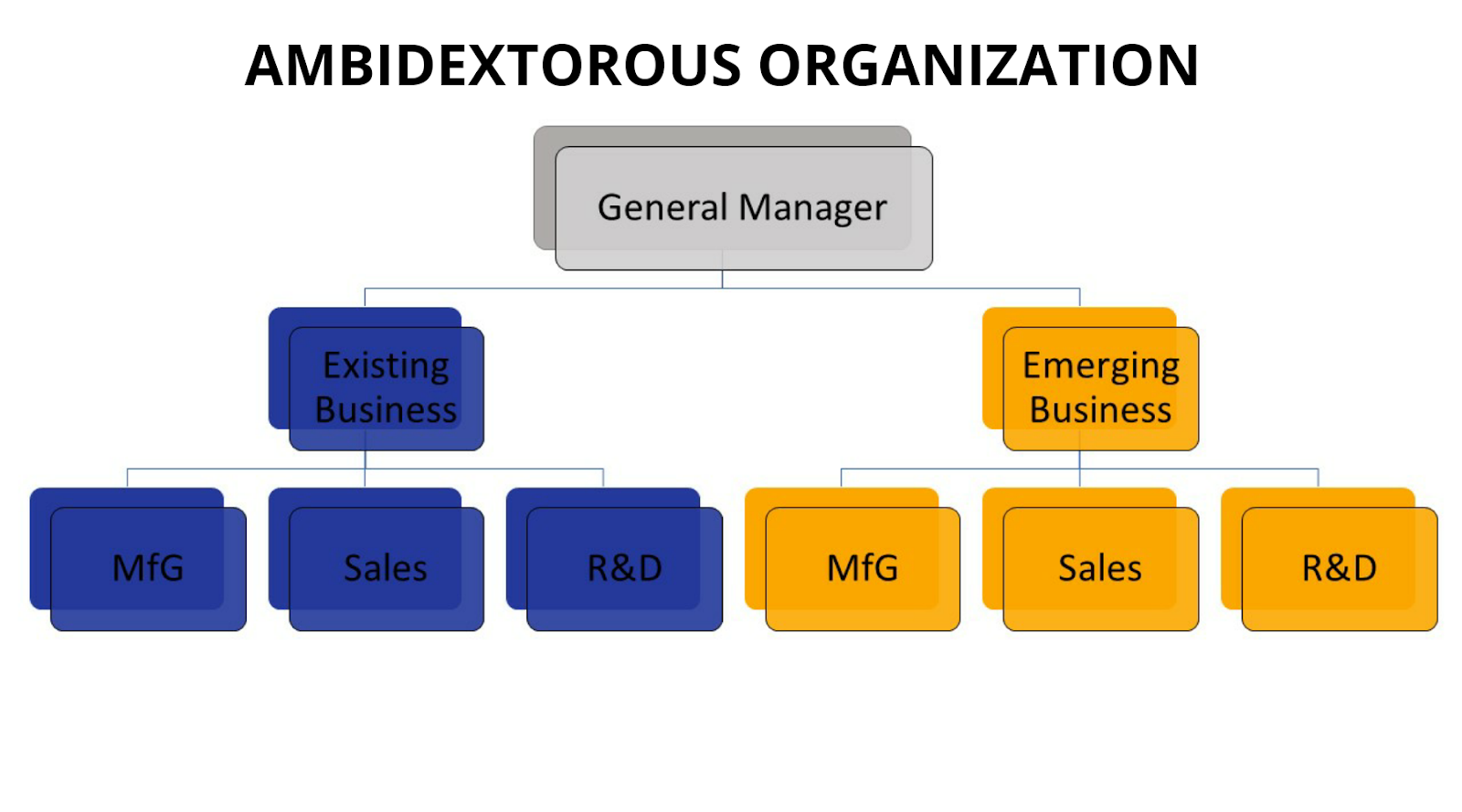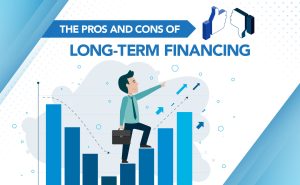Do we really need Innovation Statistics? Why would statistics of something immeasurable be needed? Yes, It’s SIGNIFICANT.
Statistics inform us about what’s happening around the world. It compresses the whole information in numbers.
Innovation is difficult to measure. But it MATTERS in today’s fast-paced world. And what matters in the business market needs to be measured.
In other words, it encourages productivity in all fields- from business to education & from social science to the health industry.
It aids in planning and the decision process of the business. Additionally, it projects what works and what doesn’t.
Innovation statistics give direction to future actions. It exemplifies what’s needed & what’s important. Although innovation is difficult to measure, it’s statistics present deep insights to innovators.
In this article, you’ll get to know the various statistics related to innovation. In addition, you’ll find some interesting data and findings with spellbinding infographics.
So let’s get into this…
List of Innovation Statistics:
(open innovation statistics & Why do innovations fail? info Included in these links with statistics)
- 40% of leaders in the U.K fear failures of disruptive ideas. Thus rejects it. Whereas, only a quarter of boards of directors give priority to innovation. (Source: PA Consulting)
- To increase innovation here are some initiatives firms take to encourage employees: 44% revealed they give incentives for innovative accomplishments, 43% support for external workshops or training & 42% offer an innovation-focused activity or events like hackathons. (Source: EY)
- Also, in a survey of 2500 innovative leaders, 30% said they are actively focusing on AI-based innovation & programs to impact their business in the next two-five years. (Source: BCG)
- 60% of respondents believe internal employees to be the most important partners to deliver people-powered innovation. (Source: PWC)

- 81% of respondents of Digitized Companies which are present in the market as matured organizations revealed their firms cite innovation as the main strength. (Source: MIT Sloan Management Review and Deloitte)
- A survey of 800 U.K business leaders conveyed, only 66.67% of them consider innovation as an important criterion in the success of an organization. (Source: PA Consulting)
- 86% of them say more than 10% of the time their work involves constant experimentation & Innovation. 83% of them say they focus on cross-functional team activity to improve innovative efforts. (Source: MIT Sloan Management Review and Deloitte)
- According to market research, 46% of marketers face risk resistance as their greatest barrier. And 41% face talent shortages & inability to measure the impact. (Source: Gartner)
- 53% of marketers say revenue growth & customer experience are the top innovation drivers. And 45% believe it to be developing new products and services. (Source: Gartner)
- More than 65% of respondents consider sales growth as the most significant metric to measure Innovation impact. So, this is followed by 43% of respondents preferring customer satisfaction rates as the second important metric. (Source: PWC)

- Three out of four global executives believe a lack of skills is the core issue industry faces to bring our innovation in the market. (Source: GE)
- A survey by IDC says, nearly 40% of CIOs will be co-leading the innovation process in organizations & by 2022 it will be nearly synonymous with disruption. (Source: IDC)
- One-fourth of C-suite executives say they have a designated role to foster innovation in organizations, namely Chief Innovation Officer. (Source: EY)
- The average time of an innovation leader’s career is 18.6 years & they spend on an average 3.2 years in the position. (Shift: ShiftNewCo)
- Innovation is a competitive element in organizations as agreed by only 43% of Business Managers. (Source: VisionCritical)
- Around 93% of Executives say organic growth through the innovation process can contribute to greater revenue growth. (Source: VisionCritical)
- Failure tolerance is a key element of the innovation process. 79% of C-suite executives believe their organization is tolerant enough for timely innovation implementation. (Source: EY)
- More companies are shifting from traditional R&D to inclusive operating models such as open innovation, design thinking, and collaboration with customers, partners & suppliers. (Source: PWC)

- In the year 2018, IBM was the most innovative firm as it registered around 9,100 patent grants of artificial intelligence, blockchain, cloud computing, & quantum computing. (Source: Statista)
- A global study of 1200 organizations revealed 54% of executives struggle to bring alignment between innovation strategy and business strategy. In addition, 61% of respondents encourage open innovation for generating new ideas. (Source: PWC)
- The UK’s business sector rose its R&D expenditure from £1.6 billion to £34.8 billion in 2017. An increase of 4.8% as compared to the previous year. (Source: ONS)
- A 2017 research by Crowd Companies revealed 56.9% of innovation leaders struggle to foster an internal culture of innovation & experimentation.
- Whereas competing internal agendas and goals (56%); overcoming the middle management “permafrost” layer (45%), and moving forward despite the deferred commitment and delayed action (33%) are some of the challenges faced by leaders. (Source: Strategist)
- Clayton Christensen, HBS professor revealed, every year 30,000 new customer products are launched, and almost 95% of these products fail in the market. (Source: HBS)
- 54% of companies say their customer engagement strategy drives innovation from early ideation. Whereas 35% of them consider their customers as the most important innovation partner. (Source: PWC)
- An Ambidextrous organization has the highest success rate of 90% in breakthrough innovations. So, while backing it, a survey by BCG Global Innovation reveals the best innovators use an ambidextrous approach 77% of the time. (Source: HBR)

- Although 84% of executives agree on innovation as an integral factor in growth strategy, only 6% of them are satisfied with innovation performance. (Source: Mckinsey)
- 84% of respondents or consumers say they give importance to the innovative factor of a company while purchasing a product. (Source: Lab42)
- Emerging companies don’t consider the government as the main driver for innovation.SS(Source: Global Innovation Barometer)
- The world’s 1000 biggest companies increased their spendings on R&D by 11.4% in 2018 to $782 billion. That’s a serious BIG amount !!! (Source: StrategyAnd)
- Asian Countries witnessed a 34% increase in their ability to evaluate and foster innovation. (Source: Global Innovation Barometer)
Five Mind-blowing Innovation facts:
- During the 1600s, Innovators were considered troublemakers. At that time, innovation means chopping off your ears and living the rest of your life behind bars.
- China is ahead in the race of innovation. In 2012, China’s State Intellectual Property Office (SIPO) granted 1.26 million Chinese patents more than any other patent office in the world, including the U.S. Patent and Trademark Office (USPTO).
- China’s Governing body has set the goal of granting 2 million patents each year.
- A cholesterol-lowering drug that reduces heart attack & stroke risk is the most valued patent in the history of mankind ever.
- In 2012, Google and Apple spent $20 billion in two years on patent litigation. Thus, making them the highest spender on litigation than on research & development.
- The world’s first patent was registered on July 31, 1790, by Samuel Hopkins for a process of making potash, an ingredient of fertilizer. So, the patent was signed by George Washington
The Three Levels of Innovation:
Tobias Dahlberg has brilliantly explained the three main levels of innovation. So, he categorized innovation into three levels- Incremental, Break out, and Breakthrough.

-
Incremental Innovation:
Incremental Innovation is about staying relevant in the current market. It involves introducing newness to the company. So, this aims at bringing novelty to current products and services.
They aim to make simple yet meaningful changes to an existing product. Also, this can quickly gain consumer attention in the market of saturation. For eg: continuous update of iPhone mobiles.
-
Breakout Innovation:
This is the next level of innovation. So, this is about creating a never-heard & never imagined product in the existing market.
For example: Nike’s recent release is Space Hippie Sneakers. Footwear made from scraps & recycled yarn. Thus, reducing its carbon impact on the environment.
-
Breakthrough Innovation:
Breakthrough innovation is less frequent by full proof possible. Also, it blows out the existing solutions while introducing new business models.
It makes a significant transformation in the existing market. For eg: Uber. Therefore, it’s business model broke the entire taxi industry.
The Four Benefits of Innovation:
Why is innovation so demanding in the business world? Why executives are running behind Innovation? Also, why are big firms increasing their investment in organizations?
This is due to the BENEFIT that an Innovation brings with it. Here are the benefits of Innovation:
-
Gives solution to problems:
Problems are all-time rising in the business. But there you get kicked-off by a problem which cannot be solved. This indicates you need creative and innovative solutions to your problems.
Here comes the need to go beyond the obvious solution and be INNOVATIVE. Thus, making your product or service better which satisfies customer’s needs.
-
Beats Competitors:
‘Keep your supporters close but your competitors closer’. To be ahead of your competitors, you have to be better than them.
Design your products in a better way, market & promote them innovatively will make them different from competitors. Therefore, customers will naturally lead to your product when you make it better than others.
-
Boosts your Business:
Solving a problem means you are throwing away the wall of obstacles and getting closer to customers. Therefore, innovative ideas in HR, marketing, finance, operations, etc will help to run your business in a better way.
Thus, reducing the costs and boosting the business.
-
Improves Internal productivity:
Work Smart is the new mantra that everyone admires. The fact that makes it more relishing than “Work Hard’ is more work at less time.
That is to increase productivity. In other words, you have to be creative and strategic while streamlining the workflow to improve productivity.
These benefits have a big positive impact on the organization. Hence, it’s a non-stop activity to improve & make your business better.
Take Away:
Innovation is not the final destination. The path of innovation is continuous. It goes on and on. Though an integral growth strategy, many innovation leaders struggle to get “successful” projects off the ground.
In addition, companies are focusing on digital transformation and innovation while encouraging the active participation of employees.
Innovation statistics throw light on the gaps which are not yet fulfilled & have the potential to bring the required transformation.
So, got a Business Idea but don’t know how to get funding?









